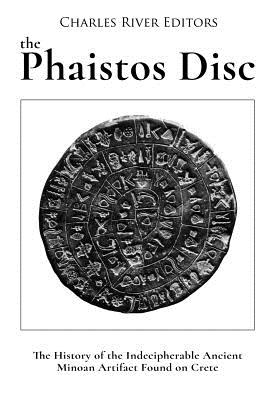The Phaistos Disc: The History of the Indecipherable Ancient Minoan Artifact Found on Crete

The Phaistos Disc: The History of the Indecipherable Ancient Minoan Artifact Found on Crete
*Includes online resources and a bibliography for further reading
The pre-modern world, especially the ancient world, is full of many mysteries, riddles, and enigmas that have perplexed scholars and lay people alike for centuries. One does not have to search long to find some of these mysteries. Ancient Egypt is often thought of as one of the most arcane of all civilizations with many aspects of its culture that are only now coming to light. For instance, the hieroglyphic script was not deciphered until the 19th century and to date scholars are still unsure about the details concerning how the pyramids were built or how mummies were made since there are no extant ancient "guidebooks" of either. In the New World, the sudden decline of the Mayan culture has captured the imagination of many for generations as the Maya left no records detailing their downfall. Likewise, the oldest European culture to reach the status of "civilization" - the Minoans - remains a mystery to the modern world in many ways. Nearly 2,500 years after the Golden Age of Athens, people across the world today continue to be fascinated by the Ancient Greeks, but the Greeks looked up to the Minoans. In Homer's Odyssey, Odysseus makes note of "a great town there, Cnossus, where Minos reigned." It was perhaps the earliest reference to the Minoan civilization, a mysterious ancient civilization that historians and archaeologists still puzzle over, but a civilization that renowned historian Will Durant described as "the first link in the European chain."
Nearly 2,000 years before Homer wrote his epic poems, the Minoan civilization was centered on the island of Crete, a location that required the Minoans to be a regional sea power. And indeed they were, stretching across the Aegean Sea from about 2700-1500 BCE, with trade routes extending all the way to Egypt.
Archeologists have found evidence that many of the Cretan cities suffered severe damage and were ravaged by fire at the same time Minoan trade diminished. Although some of the cities were reoccupied and partially rebuilt, the Minoan civilization never fully recovered. There is evidence that the Myceneans from the mainland began to occupy the cities of Crete and became the dominant traders in the Eastern Mediterranean.
Throughout the late 19th century and much of the 20th century, some scholars believed the Minoans were unable to maintain their dominance over the bellicose Myceneans, while others speculated
PRP: 79.36 Lei
Acesta este Prețul Recomandat de Producător. Prețul de vânzare al produsului este afișat mai jos.
71.42Lei
71.42Lei
79.36 LeiLivrare in 2-4 saptamani
Descrierea produsului
*Includes online resources and a bibliography for further reading
The pre-modern world, especially the ancient world, is full of many mysteries, riddles, and enigmas that have perplexed scholars and lay people alike for centuries. One does not have to search long to find some of these mysteries. Ancient Egypt is often thought of as one of the most arcane of all civilizations with many aspects of its culture that are only now coming to light. For instance, the hieroglyphic script was not deciphered until the 19th century and to date scholars are still unsure about the details concerning how the pyramids were built or how mummies were made since there are no extant ancient "guidebooks" of either. In the New World, the sudden decline of the Mayan culture has captured the imagination of many for generations as the Maya left no records detailing their downfall. Likewise, the oldest European culture to reach the status of "civilization" - the Minoans - remains a mystery to the modern world in many ways. Nearly 2,500 years after the Golden Age of Athens, people across the world today continue to be fascinated by the Ancient Greeks, but the Greeks looked up to the Minoans. In Homer's Odyssey, Odysseus makes note of "a great town there, Cnossus, where Minos reigned." It was perhaps the earliest reference to the Minoan civilization, a mysterious ancient civilization that historians and archaeologists still puzzle over, but a civilization that renowned historian Will Durant described as "the first link in the European chain."
Nearly 2,000 years before Homer wrote his epic poems, the Minoan civilization was centered on the island of Crete, a location that required the Minoans to be a regional sea power. And indeed they were, stretching across the Aegean Sea from about 2700-1500 BCE, with trade routes extending all the way to Egypt.
Archeologists have found evidence that many of the Cretan cities suffered severe damage and were ravaged by fire at the same time Minoan trade diminished. Although some of the cities were reoccupied and partially rebuilt, the Minoan civilization never fully recovered. There is evidence that the Myceneans from the mainland began to occupy the cities of Crete and became the dominant traders in the Eastern Mediterranean.
Throughout the late 19th century and much of the 20th century, some scholars believed the Minoans were unable to maintain their dominance over the bellicose Myceneans, while others speculated
Detaliile produsului










